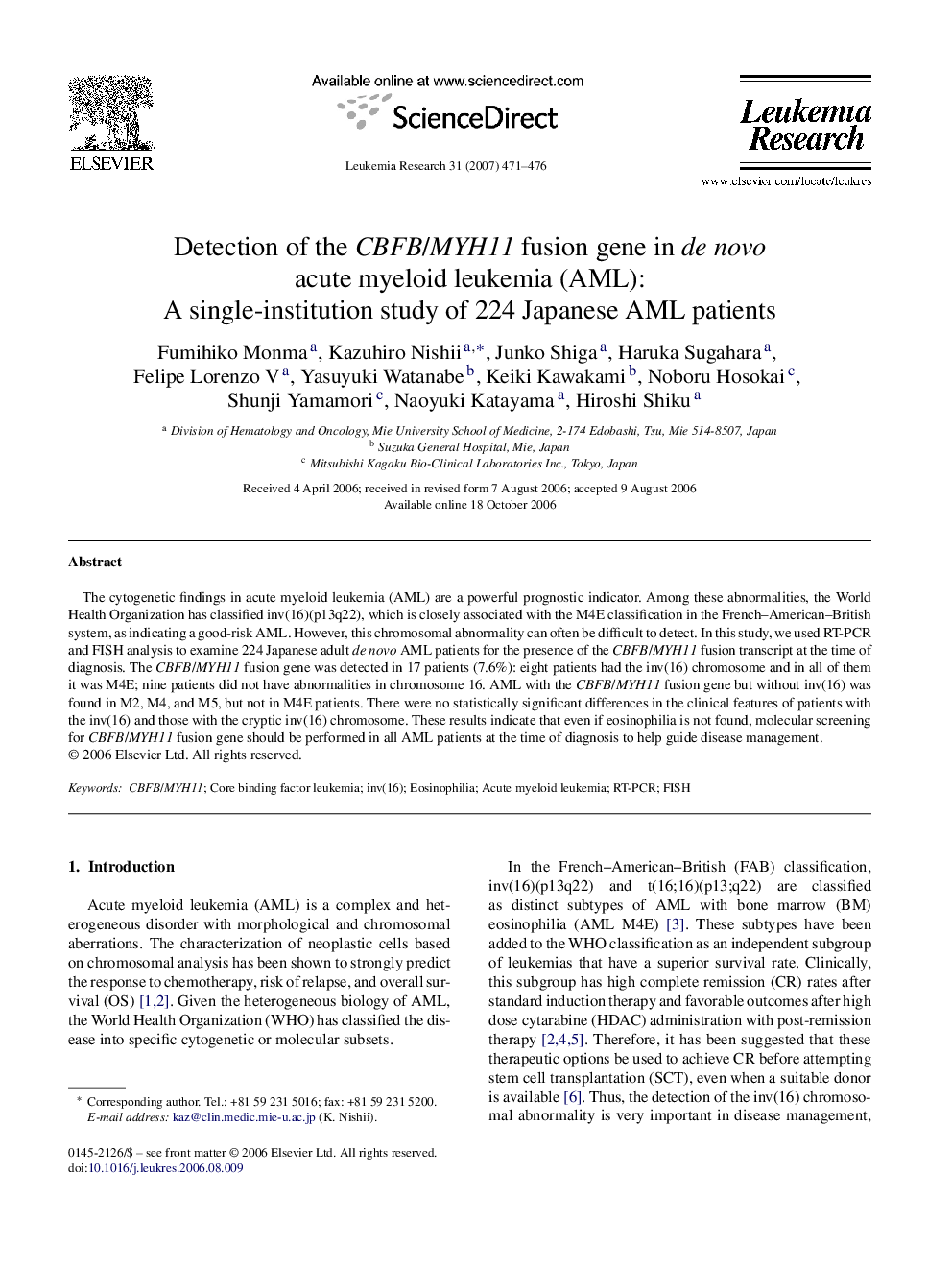| Article ID | Journal | Published Year | Pages | File Type |
|---|---|---|---|---|
| 2138504 | Leukemia Research | 2007 | 6 Pages |
The cytogenetic findings in acute myeloid leukemia (AML) are a powerful prognostic indicator. Among these abnormalities, the World Health Organization has classified inv(16)(p13q22), which is closely associated with the M4E classification in the French–American–British system, as indicating a good-risk AML. However, this chromosomal abnormality can often be difficult to detect. In this study, we used RT-PCR and FISH analysis to examine 224 Japanese adult de novo AML patients for the presence of the CBFB/MYH11 fusion transcript at the time of diagnosis. The CBFB/MYH11 fusion gene was detected in 17 patients (7.6%): eight patients had the inv(16) chromosome and in all of them it was M4E; nine patients did not have abnormalities in chromosome 16. AML with the CBFB/MYH11 fusion gene but without inv(16) was found in M2, M4, and M5, but not in M4E patients. There were no statistically significant differences in the clinical features of patients with the inv(16) and those with the cryptic inv(16) chromosome. These results indicate that even if eosinophilia is not found, molecular screening for CBFB/MYH11 fusion gene should be performed in all AML patients at the time of diagnosis to help guide disease management.
